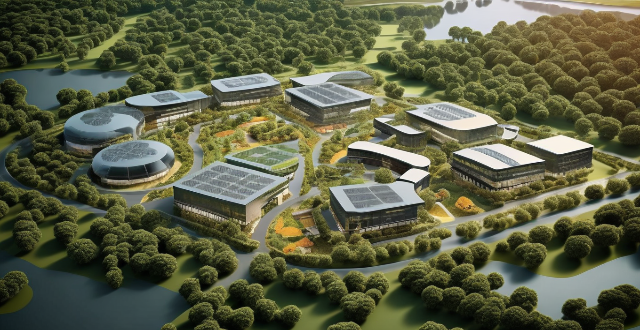Climate-smart technology encompasses a range of innovative solutions designed to mitigate the adverse effects of climate change and promote sustainable development. These technologies aim to reduce greenhouse gas emissions, enhance energy efficiency, and adapt to changing climate conditions. Key features include energy efficiency, renewable energy sources, carbon capture and storage, water conservation, and waste reduction. Applications span various sectors such as agriculture, transportation, buildings, industry, and energy production. The benefits of these technologies include environmental sustainability, economic growth, public health improvements, resilience against natural disasters, and resource efficiency. However, challenges such as high costs, infrastructure requirements, skill gaps, and the need for policy support must be addressed to ensure widespread adoption.

Climate-Smart Technology: A Comprehensive Overview
Introduction to Climate-Smart Technology
Climate-smart technology refers to innovative solutions designed to mitigate the adverse effects of climate change and promote sustainable development. These technologies aim to reduce greenhouse gas emissions, enhance energy efficiency, and adapt to the changing climate conditions. They play a crucial role in achieving global climate goals and ensuring a resilient future for our planet.
Key Features of Climate-Smart Technology
Climate-smart technology encompasses a wide range of features that make it an effective tool in combating climate change. Some of the key features include:
- Energy Efficiency: These technologies are designed to minimize energy consumption and maximize output, reducing carbon footprint and promoting sustainability.
- Renewable Energy: Climate-smart technology often incorporates renewable energy sources such as solar, wind, and hydro power to reduce dependence on fossil fuels.
- Carbon Capture and Storage (CCS): This feature involves capturing carbon dioxide emissions from industrial processes and storing them underground, preventing their release into the atmosphere.
- Water Conservation: Many climate-smart technologies focus on water conservation and management, addressing issues related to water scarcity and quality.
- Waste Reduction: These technologies aim to reduce waste generation and promote recycling, minimizing the environmental impact of human activities.
Applications of Climate-Smart Technology
Climate-smart technology has numerous applications across various sectors, including:
- Agriculture: Precision farming techniques, drought-resistant crops, and efficient irrigation systems help farmers adapt to changing weather patterns and improve crop yields.
- Transportation: Electric vehicles, public transportation systems, and smart traffic management systems reduce greenhouse gas emissions from transportation.
- Buildings: Energy-efficient buildings with advanced insulation, solar panels, and smart HVAC systems minimize energy consumption and lower carbon footprints.
- Industry: Clean production methods, waste reduction strategies, and energy-efficient manufacturing processes reduce the environmental impact of industrial activities.
- Energy Production: The integration of renewable energy sources into power grids, along with energy storage solutions, helps transition towards a low-carbon economy.
Benefits of Climate-Smart Technology
The adoption of climate-smart technology offers numerous benefits, including:
- Environmental Sustainability: By reducing greenhouse gas emissions and promoting renewable energy sources, these technologies contribute to a more sustainable environment.
- Economic Growth: Investments in climate-smart technology can drive economic growth by creating new job opportunities and fostering innovation.
- Public Health: Reducing air pollution and improving water quality through climate-smart technology can have significant positive impacts on public health.
- Resilience: These technologies help communities adapt to the changing climate conditions, enhancing their resilience against natural disasters and extreme weather events.
- Resource Efficiency: Climate-smart technology promotes resource efficiency by reducing waste, conserving water, and maximizing energy usage.
Challenges and Considerations
While climate-smart technology offers numerous benefits, it also faces several challenges and considerations, such as:
- Cost: The initial investment required for some climate-smart technologies can be high, making it challenging for some communities or industries to adopt them.
- Infrastructure: The implementation of certain climate-smart technologies may require significant changes to existing infrastructure, which can be complex and time-consuming.
- Skill Gap: The successful deployment of climate-smart technology often requires specialized skills and knowledge, which may not be readily available in all regions.
- Policy Support: Government policies and incentives play a crucial role in promoting the adoption of climate-smart technology. Adequate support from policymakers is essential for widespread adoption.
Conclusion
Climate-smart technology represents a promising approach to addressing the challenges posed by climate change. By incorporating innovative solutions that reduce greenhouse gas emissions, enhance energy efficiency, and promote sustainability, we can work towards a more resilient future for our planet. However, overcoming the challenges associated with these technologies requires collaborative efforts from governments, industries, and communities worldwide.